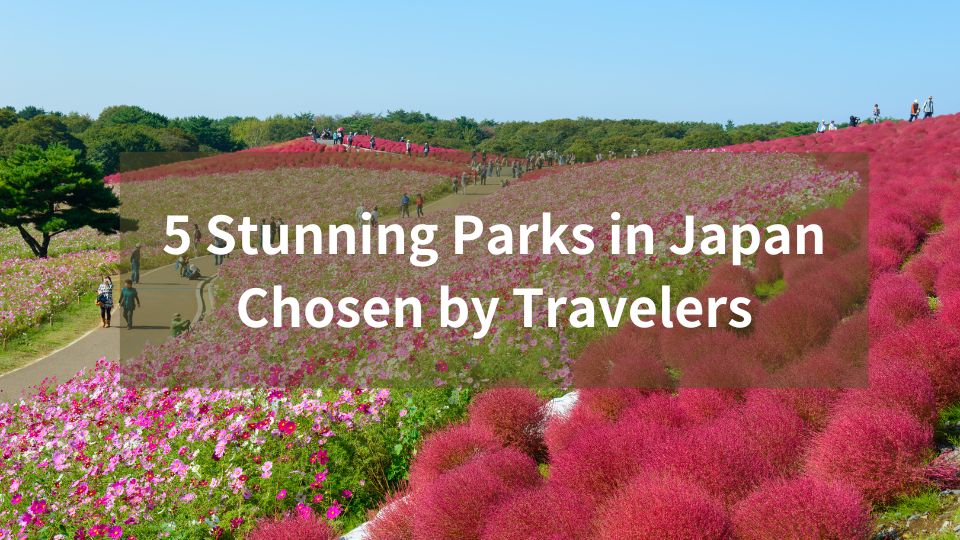Hello, this is the ShimaSuki editorial department.
- 1. Hitachi Seaside Park (Ibaraki Prefecture) – A Colorful Carpet of Flowers in Every Season
- 2. Shinjuku Gyoen National Garden (Tokyo) – A Peaceful Oasis in the Heart of the City
- 3. Takachiho Gorge Park (Miyazaki Prefecture) – A Mythical Landscape of Water and Rock
- 4. Lake Mashu (Hokkaido) – A Misty, Mysterious Lake of Legendary Clarity
- 5. Kintai Bridge & Kikko Park (Yamaguchi Prefecture) – Where History and Nature Paint a Living Picture
- Travel Tips for Visiting Japan’s Scenic Parks
- Conclusion – Let Japan’s Parks Inspire Your Journey
1. Hitachi Seaside Park (Ibaraki Prefecture) – A Colorful Carpet of Flowers in Every Season
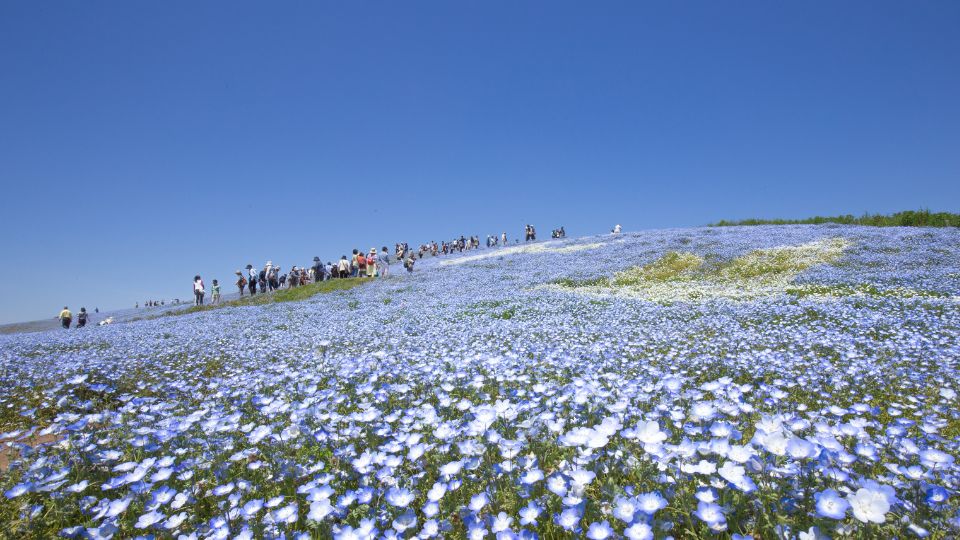
Location: Hitachinaka, Ibaraki
Access: Approx. 2 hours from Tokyo by train and bus (via Katsuta Station)
Hitachi Seaside Park is one of the most visually striking parks in Japan. In spring, millions of baby blue nemophila flowers cover the hills, creating a surreal sky-blue landscape. In autumn, the same hills turn vibrant red with kochia plants. This dramatic transformation draws photographers and nature lovers from around the world. But beyond Instagram-worthy shots, the vast scale and serenity of the park offer a truly immersive experience.
Highlights:
- Over 4.5 million nemophila in bloom (mid-April to early May)
- Fiery red kochia in autumn (peak in mid-October)
- Cycling paths, a giant Ferris wheel, and other family-friendly activities
Traveler’s voice:
“It felt like walking inside a painting. The blue flowers swayed in the breeze, blending with the sky and sea—it was mesmerizing.”
2. Shinjuku Gyoen National Garden (Tokyo) – A Peaceful Oasis in the Heart of the City
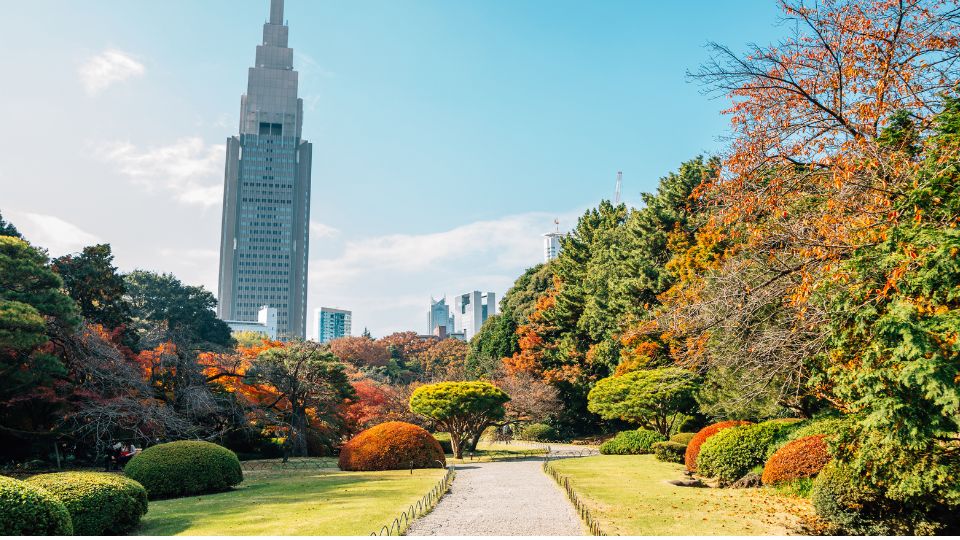
Location: Shinjuku, Tokyo
Access: 10-minute walk from JR Shinjuku Station South Exit
Amid the hustle and bustle of Tokyo lies Shinjuku Gyoen, a beautifully designed garden that offers a rare sense of calm. Originally an imperial garden, it features a unique combination of three styles: French formal garden, English landscape garden, and traditional Japanese garden. Cherry blossoms in spring and colorful foliage in autumn make this park especially popular with tourists and locals alike.
Highlights:
- Over 1,000 cherry trees bloom in spring (late March to early April)
- Traditional Japanese garden with koi ponds and stone bridges
- Historical architecture, including the Taiwan Pavilion
Traveler’s voice:
“An incredible contrast to the city’s energy. Every corner of the garden reflects Japanese aesthetics. I could have spent all day here.”
3. Takachiho Gorge Park (Miyazaki Prefecture) – A Mythical Landscape of Water and Rock
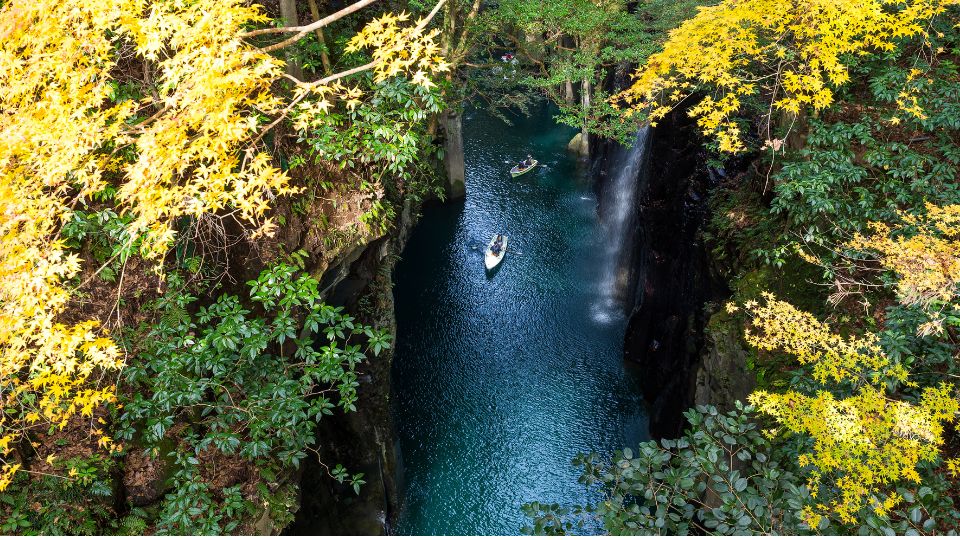
Location: Takachiho, Miyazaki
Access: About 2.5 hours by car from Miyazaki Airport (bus options available)
Takachiho Gorge is a magical place where Japanese mythology and nature meet. According to legend, this is where the sun goddess hid in a cave, plunging the world into darkness. The centerpiece of the park is Manai Falls, a 17-meter waterfall that cascades into a narrow volcanic gorge. Visitors can rent rowboats and float beneath the falls for an up-close view of this natural wonder.
Highlights:
- Rowboat ride through the gorge under Manai Falls
- Lava-carved cliffs with striking columnar joint formations
- Nearby shrines like Takachiho Shrine and Amano-Iwato Shrine
Traveler’s voice:
“Rowing through the gorge was surreal. I felt like I was stepping into a legend. The atmosphere is spiritual and deeply peaceful.”
4. Lake Mashu (Hokkaido) – A Misty, Mysterious Lake of Legendary Clarity
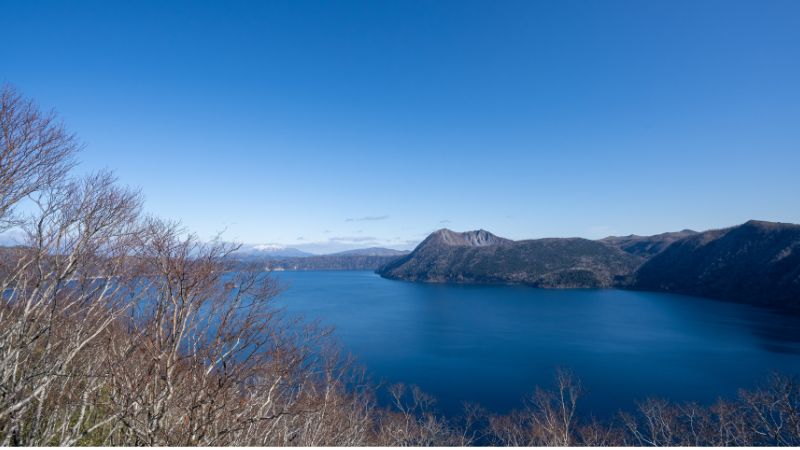
Location: Teshikaga, Hokkaido (in Akan-Mashu National Park)
Access: 1.5 hours by car from Memanbetsu Airport
Lake Mashu is often called “the lake of the gods,” known for its crystal-clear water and mystical ambiance. Frequently shrouded in mist, it’s said that seeing the lake’s surface is a sign of good luck. On clear days, the deep blue water reveals astonishing transparency, making it one of the clearest lakes in the world. The views from the mountaintop observation decks are nothing short of spectacular.
Highlights:
- Panoramic views from the first and third observation decks
- Pristine, mirror-like water (best seen early in the morning)
- Snow-covered surroundings offer dreamlike winter scenes
Traveler’s voice:
“When the mist cleared, the lake appeared like a hidden gem. Its deep blue water seemed untouched by time—a sacred, tranquil space.”
5. Kintai Bridge & Kikko Park (Yamaguchi Prefecture) – Where History and Nature Paint a Living Picture
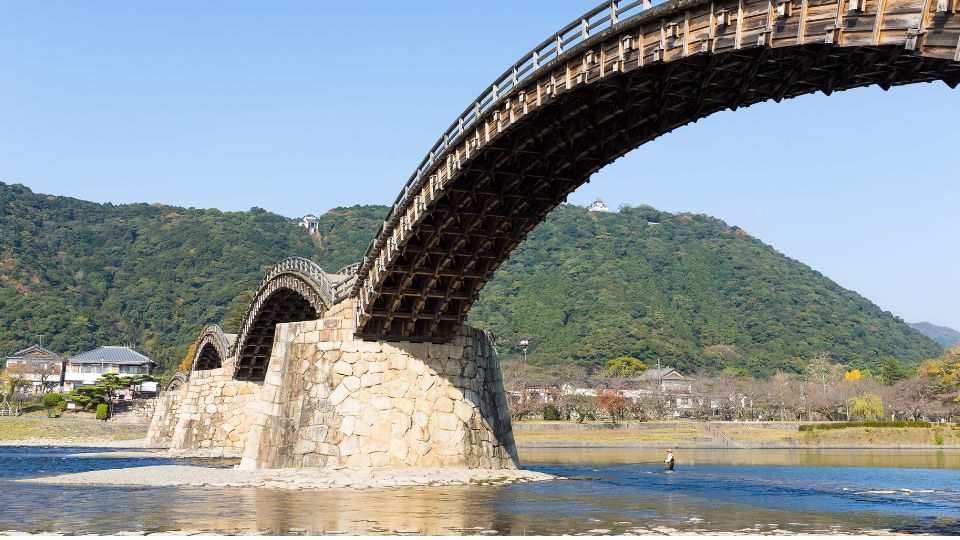
Location: Iwakuni, Yamaguchi
Access: 20 minutes by bus from Iwakuni Station
Kintai Bridge is a historic wooden arch bridge consisting of five elegant spans across the Nishiki River. It’s particularly breathtaking during cherry blossom season in spring and during the autumn foliage season. At one end of the bridge is Kikko Park, a beautifully preserved historical area featuring samurai residences, museums, and a traditional Japanese garden.
Highlights:
- Iconic wooden arch bridge with seasonal backdrops
- Peaceful gardens and samurai-era architecture in Kikko Park
- Cable car ride to Iwakuni Castle for sweeping views
Traveler’s voice:
“It felt like stepping into a historical drama. The bridge, the trees, and the castle together created a storybook landscape.”
Travel Tips for Visiting Japan’s Scenic Parks
- Check the Seasonal Calendar
Many parks are best experienced during specific seasons. Spring (March–April) for cherry blossoms, summer for lush greenery, and autumn (October–November) for colorful foliage. - Plan Transportation in Advance
Parks in rural areas may require a rental car or tourist bus. Some are accessible only via local trains and buses, so check routes beforehand. - Respect Nature and Park Rules
Carry your trash with you, avoid picking flowers or stepping off trails, and maintain a quiet atmosphere—especially in traditional gardens.
Conclusion – Let Japan’s Parks Inspire Your Journey
Japan’s parks are more than just places to relax—they are gateways to experiencing the soul of the country. Whether you’re walking through a sea of flowers, rowing under a waterfall, or standing on a centuries-old bridge, each of these scenic parks offers a chance to connect deeply with nature, history, and culture. Let your journey through Japan be filled with not just sights, but unforgettable moments of serenity and awe.

